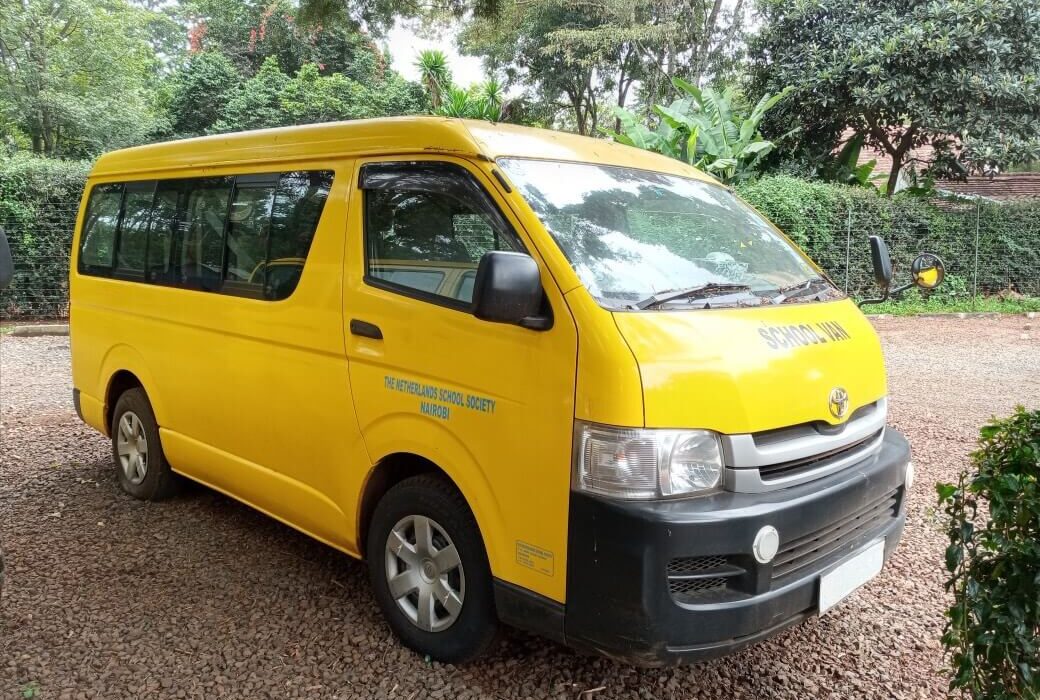In Kenya, school bus drivers play a critical role in ensuring the safety and well-being of students during their daily commutes. With the rising number of school buses on Kenyan roads, particularly in urban centers like Nairobi, Mombasa, and Kisumu, the demand for qualified and responsible school bus drivers has never been higher. According to the National Transport and Safety Authority (NTSA), over 10,000 school buses operate across the country, transporting millions of students annually. However, this responsibility comes with stringent regulations to guarantee child safety, vehicle reliability, and compliance with traffic laws. This article explores the qualifications, roles, and responsibilities of a school bus driver in Kenya, providing a comprehensive guide for transport providers, schools, parents, and aspiring drivers. Whether you’re a school administrator seeking compliance or a driver aiming to meet NTSA standards, this guide covers everything you need to know about school bus driver qualifications and roles in Kenya.
Qualifications of a School Bus Driver in Kenya
To become a school bus driver in Kenya, individuals must meet specific qualifications outlined by the NTSA under the Traffic (School Transport) Rules. These regulations ensure that drivers are competent, trustworthy, and capable of safeguarding children. Below are the key qualifications required:
Valid Driver’s License for School Vehicles
The NTSA mandates that every school bus driver holds a valid driver’s license specific to the category of vehicle being driven. For instance:
- Class D License: Required for drivers operating school buses with a capacity of up to 33 passengers.
- Class B License with Endorsement: Necessary for larger buses exceeding 33 passengers.
- Continuous Training: Drivers must undergo periodic training to maintain their license, ensuring familiarity with updated traffic rules and safety protocols.
This requirement ensures that drivers are skilled in handling school vehicles, which often carry dozens of children and require specialized driving techniques.
Annual Criminal Record Assessment
Safety is paramount when transporting children, and the NTSA enforces strict background checks to ensure drivers are trustworthy. Key aspects include:
- Mandatory Annual Check: Drivers must pass an annual criminal record assessment conducted by the Directorate of Criminal Investigations (DCI).
- Disqualifying Offenses: A driver with a conviction for child abuse, driving under the influence (DUI), or drug-related offenses is automatically disqualified.
- Certificate of Good Conduct: A valid certificate is required to prove the driver’s clean criminal record.
This rigorous vetting process protects students from potential harm and ensures that only individuals of high moral standing are entrusted with their safety.
Annual Medical Examination
Physical and mental fitness is critical for school bus drivers, as they must remain alert and capable of handling emergencies. The NTSA requires:
- Annual Medical Test: Conducted by a qualified medical practitioner to assess vision, hearing, and overall health.
- Focus Areas: Tests evaluate conditions like diabetes, hypertension, or vision impairments that could affect driving ability.
- Certification: Drivers must present a medical certificate to confirm fitness for duty.
This requirement ensures that drivers are in optimal health to operate school buses safely, reducing the risk of accidents caused by medical issues.
Additional Qualifications
Beyond NTSA requirements, schools and transport providers often seek additional skills, such as:
- First Aid Training: Knowledge of basic first aid to handle emergencies like minor injuries or medical episodes.
- Child Protection Training: Awareness of child safeguarding policies to ensure appropriate interactions with students.
- Defensive Driving Certification: Training to navigate Kenya’s challenging road conditions, including rural routes and heavy traffic in cities like Nairobi.
These qualifications collectively ensure that school bus drivers in Kenya are well-equipped to handle the unique demands of transporting children.
Roles and Responsibilities of a School Bus Driver in Kenya
The NTSA’s Traffic (School Transport) Rules outline specific duties for school bus drivers to ensure the safety, health, and welfare of their passengers. These responsibilities go beyond merely driving, encompassing vehicle maintenance, student supervision, and compliance with safety protocols. Below are the key roles of a school bus driver in Kenya:
Ensuring Passenger Safety and Welfare
School bus drivers are fully responsible for the well-being of every child on board. This includes:
- Supervising Boarding and Alighting: Ensuring students board and disembark safely, clearing to a safe distance from the vehicle.
- Using Safety Equipment: Activating the Stop Signal Arm and dual red-light indicators when stopping to allow children to board or alight, as required by NTSA regulations.
- Emergency Preparedness: Being ready to respond to accidents, medical emergencies, or breakdowns, ensuring children are safe at all times.
For example, in 2024, a school bus driver in Eldoret was commended for safely evacuating students during a minor collision, highlighting the importance of quick thinking and adherence to safety protocols.
Operating the School Vehicle Safely
Safe driving is at the core of a school bus driver’s role. Key responsibilities include:
- Adhering to Traffic Rules: Following speed limits, road signs, and NTSA guidelines to minimize accident risks.
- Avoiding Distractions: Refraining from using mobile phones or engaging in activities that divert attention from the road.
- Route Familiarity: Knowing designated routes and stops to ensure timely and secure transportation.
In Kenya, where road accidents remain a concern—NTSA reported 4,000 road fatalities in 2024—safe driving practices are critical to protecting young passengers.
Conducting Pre-Trip and Post-Trip Vehicle Checks
To ensure the school bus is in optimal condition, drivers must perform thorough inspections:
- Pre-Trip Checks: Inspecting brakes, tires, lights, and safety equipment like fire extinguishers and first aid kits before departure.
- Post-Trip Checks: Ensuring no child is left on board and verifying the vehicle’s condition after each trip.
- Reporting Issues: Notifying school authorities or transport providers of any mechanical faults for immediate repair.
These checks are vital in preventing accidents caused by mechanical failures, a common issue on Kenya’s diverse road networks.
Maintaining Vehicle Cleanliness and Security
A clean and secure bus enhances student comfort and safety. Drivers are tasked with:
- Daily Cleaning: Ensuring the bus interior is free of litter and hazards, such as spilled liquids or sharp objects.
- Securing the Vehicle: Locking the bus when not in use to prevent theft or unauthorized access.
- Sanitization Protocols: Especially post-COVID-19, maintaining hygiene standards to protect students from illnesses.
A clean bus not only ensures safety but also creates a positive environment for students during their commute.
Ensuring Safe Disembarkation
One of the most critical responsibilities is ensuring children disembark safely:
- Monitoring Exits: Confirming that each child leaves the bus and moves to a safe location, away from traffic.
- Using Safety Signals: Deploying the Stop Signal Arm and red lights at least 30 meters before a stop to alert other drivers.
- Coordination with School Staff: Working with teachers or matrons to ensure students are handed over safely, especially for younger children.
This role is particularly crucial in busy urban areas like Nairobi, where traffic congestion poses risks to disembarking students.
Challenges Faced by School Bus Drivers in Kenya
Despite their critical role, school bus drivers in Kenya face several challenges that impact their ability to perform effectively:
- Poor Road Infrastructure: Rural areas often have unpaved or poorly maintained roads, increasing the risk of accidents.
- Traffic Congestion: Urban centers like Nairobi and Mombasa experience heavy traffic, leading to delays and safety concerns.
- Low Pay and Long Hours: Many drivers earn modest salaries, which can affect morale and retention.
- Parental Expectations: Parents often demand high levels of accountability, adding pressure to drivers’ responsibilities.
Addressing these challenges requires collaboration between schools, transport providers, and the government to improve working conditions and infrastructure.
The Importance of Compliance with NTSA Regulations
Compliance with NTSA regulations is non-negotiable for schools and transport providers. Failure to adhere to these standards can result in:
- Fines and Penalties: Schools or providers may face hefty fines for employing unqualified drivers or operating unsafe vehicles.
- License Suspension: Drivers found non-compliant may lose their licenses, impacting their livelihoods.
- Safety Risks: Non-compliance increases the risk of accidents, endangering students and tarnishing the reputation of schools.
In 2023, NTSA conducted nationwide inspections, resulting in over 500 school buses being impounded for non-compliance, underscoring the importance of adhering to regulations.
How to Become a School Bus Driver in Kenya
For individuals aspiring to become school bus drivers, the following steps outline the path to qualification:
- Obtain a Valid Driver’s License: Enroll in a reputable driving school and acquire a Class D or Class B license with the necessary endorsement.
- Undergo Training: Complete defensive driving and first aid courses to enhance skills.
- Apply for a Certificate of Good Conduct: Visit a DCI office or apply online to obtain a clean criminal record certificate.
- Complete a Medical Examination: Schedule an annual check-up with a certified medical practitioner.
- Seek Employment: Apply to schools or transport providers, ensuring compliance with NTSA requirements.
Aspiring drivers can also benefit from mentorship programs offered by organizations like the Kenya School Bus Drivers Association, which provide guidance on best practices.
School bus drivers in Kenya are unsung heroes who ensure the safe transportation of millions of students daily. By meeting stringent NTSA qualifications—such as holding a valid license, passing criminal and medical assessments, and fulfilling critical responsibilities like vehicle checks and safe driving—they play a pivotal role in safeguarding children. Schools, parents, and transport providers must support drivers by ensuring compliance with regulations, addressing challenges, and fostering a culture of safety. As Kenya continues to prioritize student safety in 2025, understanding the qualifications and roles of school bus drivers is essential for building a reliable and secure school transport system.
For more information on NTSA regulations or to explore career opportunities as a school bus driver, visit ntsa.go.ke or contact your local school transport provider. Together, we can ensure that every child’s journey to school is safe and stress-free.





